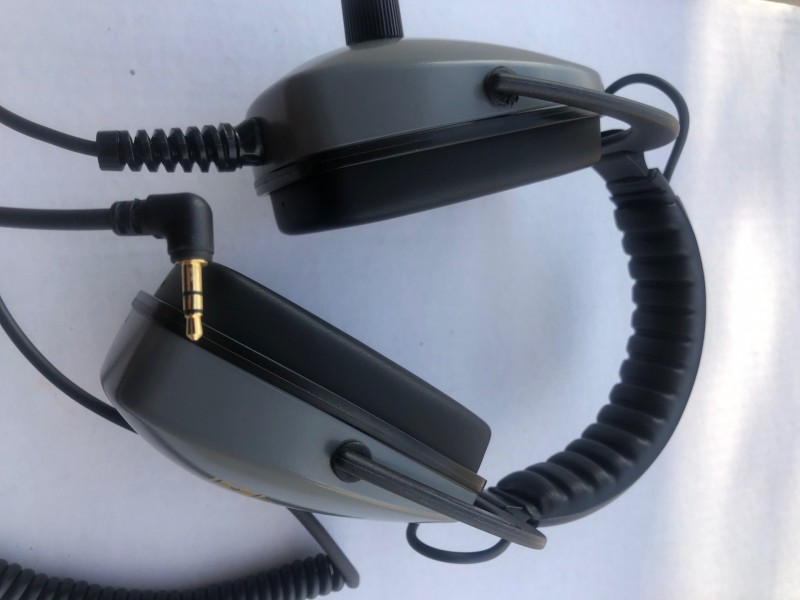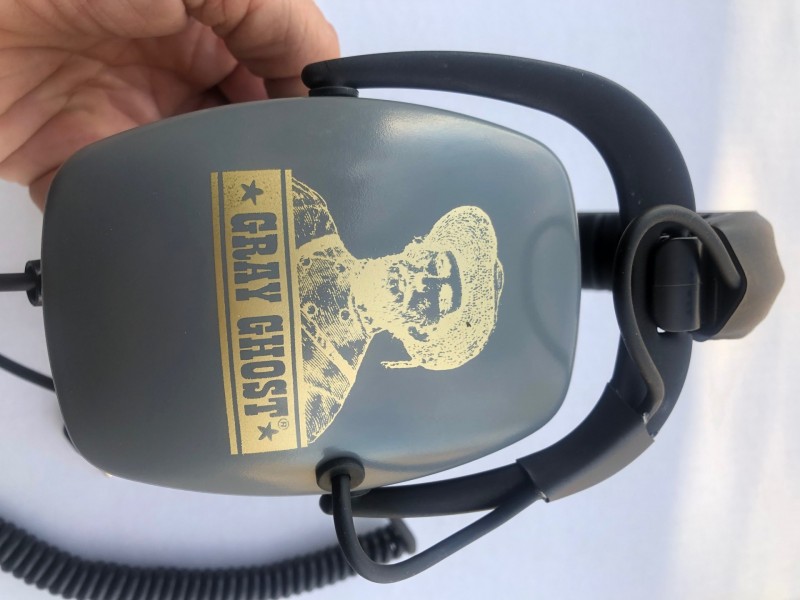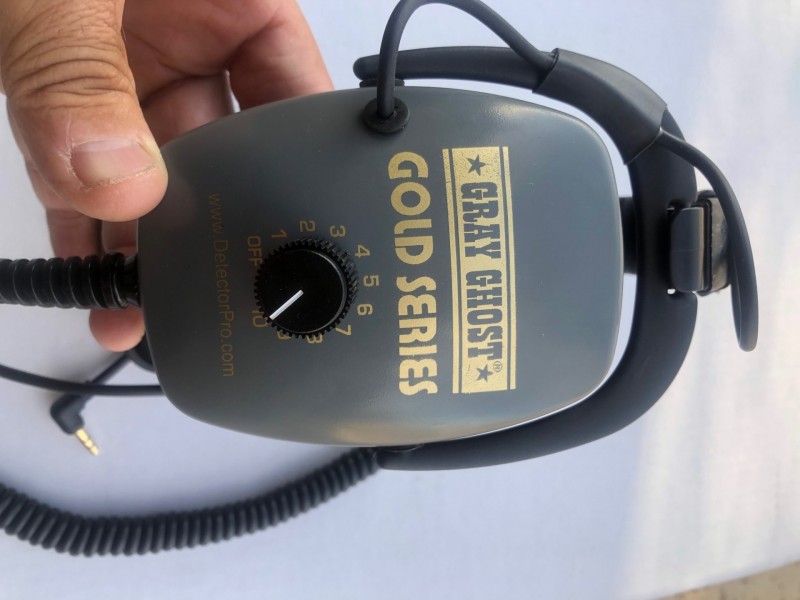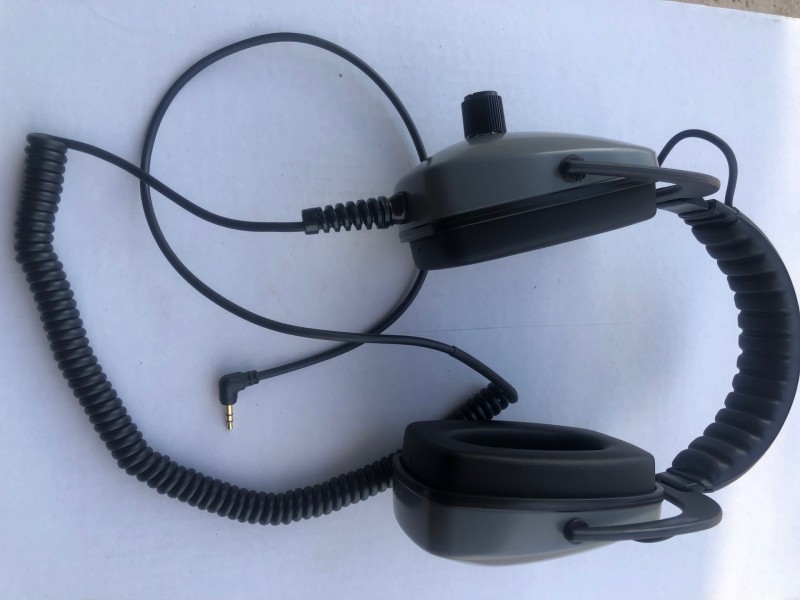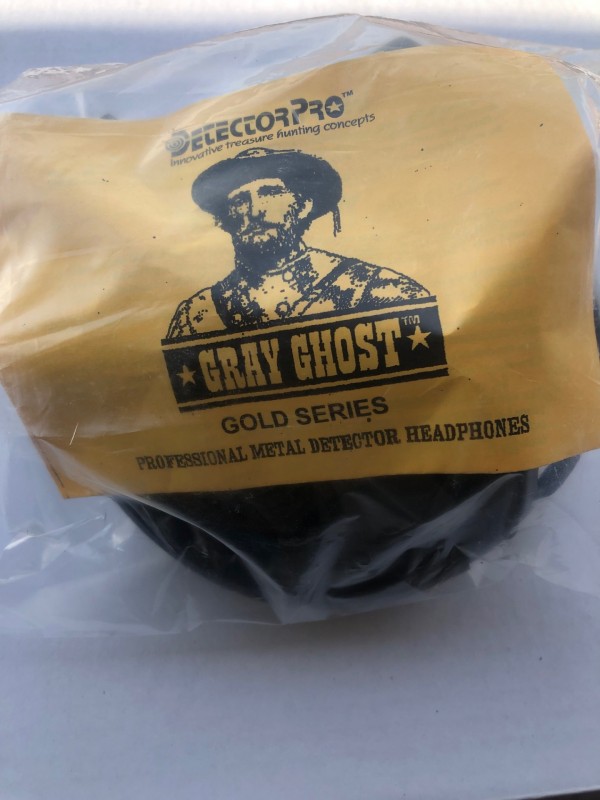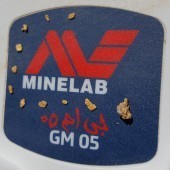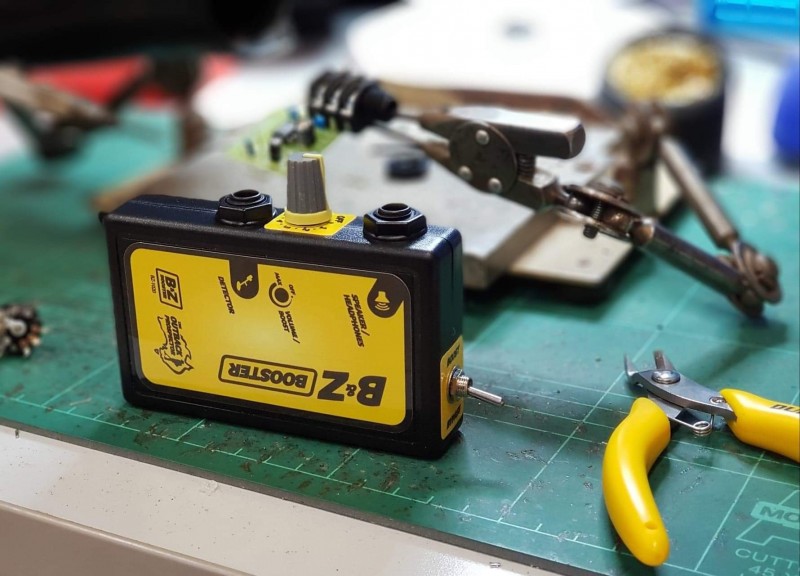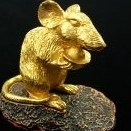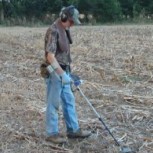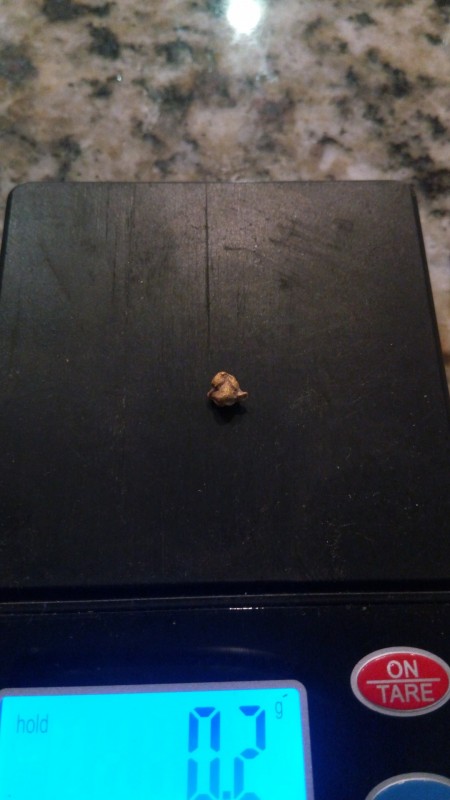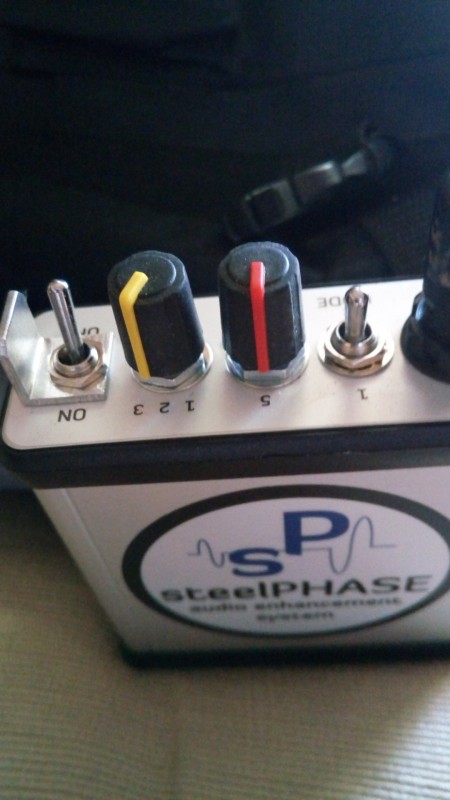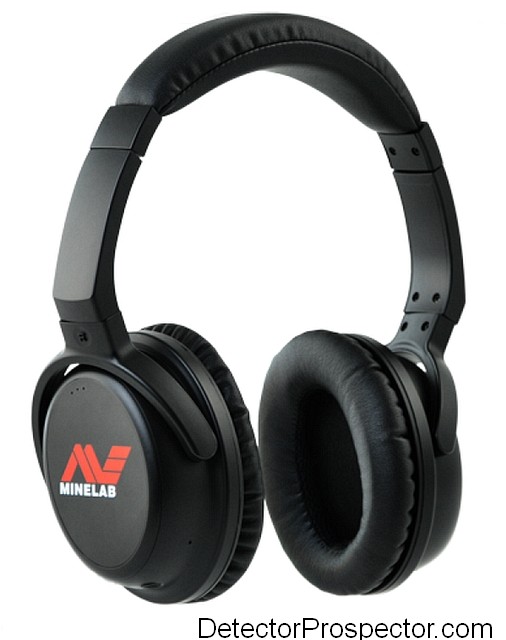Search the Community
Showing results for tags 'headphones and audio'.
-
Hey All, Just a FYI, we now have the new DetectorPro Gray Ghost "Gold Series" headphones in stock for the Minelab Gold Monster 1000 or Equinox series. These are high end headphones and will give you the best audio available out there from metal detecting headphones. We snapped some quick pictures of the headphones below for you. Your Price - $125 plus S/H Rob's Detector Sales www.robsdetectors.com 623.362.1459 - office line
-
For those of you that don't know me I recently had a severe volume spike in my tinnitus due to my 50% bilateral hearing loss. I've had the ringing for the last 10 years at a very very low tone that was only noticed if I listened for it, now it's on a whole other level. To explain the ringing, it pretty much sounds like the threshold of a GPX on full blast in your head. This weekend I tried to go swinging the Monster and GPX 5000 and found it to be very difficult to concentrate on listening to the machines as my brain was affixed to the ringing in my ears. Im hoping new hearing aids this week with a better masking tone will help. Any suggestions from anybody else who has tinnitus on what they do to enhance there detecting time to make it more enjoyable? -Mike
-
I bought an EQ 800 last year, and used it perhaps 4 times within two weeks before I put it away for winter. I used the Minelab Bluetooth headphones, which I liked very much because they are comfortable and light. With all of the recent medical warnings about earbuds and wireless headphones, I have decided to use wired headphones-including the ones I use with my iPhone-a try. However, it seems that the headphone socket of my almost new Equinox 800 does not hold the headphone plug tight enough, so the headphone sound breaks and turns "scratchy." When this happens the sound is switched back and forth from the headphones to the detector's speaker, but if I hold the headphone's plug tightly against the socket, then everything is fine. When left alone the plug wiggles in the socket. I tried 4 different headphones I have around my home, and none made a difference. I will check with Minelab USA about this, but wanted to ask of you if this is a common problem with the EQ 600 and 800.
-
hi all has anyone had trouble with pairing the 600 with aftermarket headphones i ordered a pair of low latency aptx bluetooth head phones which paired fine but just made a crackling sound so tried some cheaper ones i had in the house and none of them paired at all so went back to crawfords who tried the tronds on another 600 and the same again and tried pairing the other phones i took still would not pair on the shop 600 only phones that paired and worked fine were the mindlab ones so had to buy them so was wondering if anyone else has had this problem with after market headphones even tried a pair of £200 beats headphones from the guy across the road and again they paired but no sound just a faint crackling sound could be heard the guy in crawfords was very helpful and is going to contact minelab and ask them about it so if anyone has had this problem to i would like to hear from you regards andy
-
OK, I need to post this video and maybe it has already been shared? If so please delete my post. Many newer EQ owners out there now and some of the great info and posts are pretty deep. One of the most ocurring phone calls and emails I get from new 800 customers is on how to sync the wireless headphones to the detector. Here is a video that makes it so simple. Hats off to this young gun Matty for a fine, easy, short informative video.
-
I looked all through the Equinox tips here and didn't find anything that addresses this. I was detecting using wireless bluetooth earbuds that have worked fine for months. I walked out of range for a few minutes and when I came back the detector was running, the headphone symbol was showing on the control panel but there was no sound coming to the earbuds. I turned the detector off, turned the headphones off. Then turned the detector back on, the detector was working I could hear it, then turned the earbuds back on, the headphone symbol showed, the sound disappeared from the Equinox speaker but would not come through on the earbuds and it was the same thing when I repeated the sequence with wireless headphones that came with the detector. I also did resets on the headphones, re-paired with the detector - but the same thing happened. Any advice/help would be appreciated. Thanks!
-
"What are you listening for?" is too general. (Wish there were a video lesson showing how 50 tones are interpreted.) Here are a couple more specific: 1) What tone clue will cause you to look at the screen? 2) What tone patterns cause you to dig? 3) How good is your tone resolution? Specifically, when you hear a tone, what is the range (+/-) of TID's that you can consistently discern by ear? What are other properties of 50 tones that you key on?
-
I recently posted this to another forum and thought it might help benefit others and maybe generate some interesting discussion here. A booster can only amplify whatever the detector audio delivers no matter what anyone try’s to tell you. The inbuilt booster speaker system in the Minelab GPX 4500, GPX 5000 is too coarse for effective use via the Target Volume control, this same control is also used on the GPZ 7000 in conjunction with the WM12 and is also too coarse! I originally popularised the booster speaker concept when developing a series of instructional videos, looking for a way to obtain good audio that allowed ambient noise of a goldfields environment to also come through so viewers could experience as close as possible the way a detector sounds when in use. In conjunction with this I also discovered the benefits of removing the immediate audio from your ears and placing it further away allowing faint signals to come through (similar to a Television sounding loud in the kitchen compared to being right in front of it). Our ears are designed to collect sound, especially sound that is further away, our ears are also more sensitive to variation in pitch similar to our eyes are to movement so being able to hear the threshold at all times as a reference point is very important, but not at the expense of those around you and small target signals. The aim with a booster speaker is to lift up the overall volume of faint deep targets without drowning everything else out, as such in less trashy sites a higher volume can be used in conjunction with the correct threshold level. You need to set the volume to compliment the threshold, which needs to be smooth and stable, if someone can hear your threshold miles away you’re doing it all wrong and negating any advantage as well as driving other operators around you nuts. Best way to go is to set the detectors settings to be smooth and stable, I tend to use conservative Sensitivity/Gain settings along with Volume and Threshold. The Target Volume needs to be kept low to allow the booster to drive the audio without causing distortion, this is especially important on the GPZ 7000. If your detector Target Volume is set to aggressively the booster is then going to amplify that aggressive distorted audio. The threshold needs to be smooth to the ear to start with, if it stutters the amplifier will exacerbate that, if it is too loud it will drown the audio as you boost it. The B&Z booster is best used for single or twin speakers, it has a very good range of amplification with hardly any distortion. This is especially important because you need to use the booster to adjust the overall audio to suit the ambient noise conditions, in quiet conditions you lower the booster volume so the threshold is not dominating, if its windy then you increase the volume so the threshold can be clearly heard. The B&Z booster runs on 2 x AAA alkaline batteries which should last up to 3 weeks at 6 to 8 hours per day, it is in a plastic housing to cut down on any excess metal on your body. The B&Z can be used with headphones, to do so the volume of the detector needs to be lowered so the booster volume can be lifted above 2 1/2 to 3 to avoid noise and hiss from the potentiometer, with the GPX and GPZ machines this can be as low as 6 or even lower if required depending on the sensitivity of the headphones being used. Higher tones tend to require less volume, lower tones more, lower tones (30 and down on Minelab PIs and ZVT) are generally better heard through headphones rather than speakers, this is due to all the natural low frequency noises heard in natural ambient environments, Noise cancelling headphones really compliment low frequency Tones. The audio of the Minelab GPX and GPZ machines is converted to analogue via the speakers, boosted speakers tend to iron out the steppy digital nature of the Minelab audio, this helps a lot with running less noise floor filtering through the Stabilizer or Audio Smoothing controls, which is were all the edge of detection depth performance lays. The B&Z only ever magnifies the pure audio of the detector with no colouring of the audio through filtering, you only ever hear the “pure” audio intended by the designer of the metal detector. Call me a purist but that’s the way I prefer to hear my detector. Hope this helps JP
-
As we all know there are several tools that we use to successfully use our metal detector, one of those being our hearing. Through out our life our hearing skills diminish whether by accident, life style or by aging. I have been wearing hearing aids for a period of time now and they are greatly appreciated, without them there are many things that I would miss, some more than others. Using a detector has shown me that hearing and understanding what a detector has has to say is extremely important to be successful. With the aid of hearing enhancers and being able to distinguish between the tones of normal threshold and that slight difference of a target is the difference between success and failure. Trying to use every advantage that I can I came up with the idea of using my blue-tooth capable hearing aids and an audio transmitter from the detector to accomplish this. I have the Phonak in the ear canal hearing aids and purchased a ComPilot II receiver which only works with Phonak aids. My hearing specialist initially gave me a Demo receiver and was excited to hear the outcome of my experiment. Since I have the Equinox 600 which is all ready blue-tooth enabled all I had to do was pare the two and give it and shot. The results were fantastic, being able to hear the 'outside' noises and having the detector talking to me at the same time was unbelievable! Since the hearing aids and receiver are medical devices there is no perceived lag time like there is with some ear buds and blue-tooth head phones, perfect. I only have 11 hours using this setup in several locations such as curb strips, parks etc. I know that if I can hear in these areas that in the field gold hunting should be exceptional. I would really like to get some more time in but as I write this the temperature is 13*. Since the experience with the 600 was so positive I purchased a blue-tooth transmitter from Amazon for $30 and a 3.5mm-1/4” adapter for my other detectors. I can use the adapter on the Whites 24K and with the 1/4” adapter on the SDC2300 I now have total wireless detecting capability. Both the transmitter and receiver charge in only 2 hours and will run for about 10 hours of use time. I do want to try this in different locations but I see absolutely no downside other than having to charge the batteries, no big deal. Anyway, another winter project successfully accomplished.
-
Just thought id share the wireless system I've been using successfully for a while now on my gpx4500. My previous wireless system suffered from broken wires and finally one of the units gave up the ghost. I didn't want the Garrett Z-Lynk or the Pro Sonic so did research into other units. I wasn't sure they would work but fortunately, they did. Was looking for something robust and small that could handle the beating my equipment gets from detecting hilly thick scrub. Did a lot of research and found the "Xvive U2 Guitar Wireless System" They are robust and the connectors swivel which is really handy when fitting the receiver to the steelphase booster as it hugs the unit nicely. The lag time is not noticeable at only 6 ms. I seem to get a good day of detecting out of them and recharge time is pretty quick, although I rarely let them go flat. I'm using a light lipo battery as the power source for the detector which I tuck under the detectors cover. So much easier being wireless than getting snagged on bushes and branches. Also easier to dig targets not being attached to the detector. Xvive U2 Guitar Wireless System Comprising of two simple and small 1/4 jack connectors that act as transmitter and receiver, the U2 is ideal for stage, home and studio use and can also connect via Bluetooth to your favourite devices, using 24 bit resolution to capture every detail in real time - uncompressed, natural, clean tone with no delay at a range of up to 100ft/30m. It uses 2.4 GHz frequency and uses WI-FI spectrum. It is digital and the sound would be as though you are using a cable. You can use up to 4 units at a time. To eliminate any possibility of interference from other devices using the 2.4 GHz frequency, we recommend the Xvive U2 wireless system not be placed within 1m of another U2 Wireless system, and more than 3m away from any WI-FI devices such as Internet Routers, Portable Hot Spots etc. Featuring a rechargeable lithium battery with approximately 5 hour life at full charge. Includes a transmitter and a receiver. Charging cable is included. The Tech Specs Brand: Xvive Model: U2 Suitable For: Electric guitar, Bass guitar and Electric Acoustic instruments with an EQ with Pickup. Range: Up to 100ft/30 metre line-of-sight transmission range Delay time: 6 ms Frequency Response: 10Hz-20kHz Channels: 6 compatible (Legal for use in Australia and New Zealand) Resolution: 24-bit Delta Sigma, 2.4GHz broadcast A/D conversion: 24-bit low-noise system Dynamic Range: 105dB Play Time: Approximately 5 hours with rechargeable lithium battery Recharge Time: Approximately 2 hours when flat Input/Output: Side-mounted 1/4-inch Jack connector ins and outs on receiver/transmitter
-
I am using a sdc-2300. I am pretty hard of hearing and would like to no more about which audio Enhancer is best. I am using Sun Ray Pro Gold CTX head phones but I am still having some trouble hearing those faint signals. I have read a little on Steel Phase, BZ booster, Doc's screamer. Is one better than another?
-
Still can't seem to get my @%^&&&() Black Widows to work wireless but OK now wired. Has anyone had issues with putting the module close to the phones? Also mine seems to be falling on it's face in moving salt water, but that is another thread. Dave
-
I am happy with my Gold Pro Headphones except too hot in summer . Can't handle ear buds so I thought I'd try Earclip style . Any advice on Koss KSC75 model or others . Also any Earclip style in wireless to suit Equinox . Thanks in advance . Cheers goldrat
-

Looks Like New Wireless Setup By Mars Coming Very Soon
Guest posted a topic in Metal Detector Advice & Comparisons
https://md-hunter.com/wireless-mdlink-from-marsmd-new-2019-video/#more-14754 -
What type of charger should i use with the ML80? There are charging recommendation for the detector but not the headphones. Thanks
-
Can someone please tell me how long the Minelab adapter cable is to go from 1/8 to 1/4 headphones? Thanks Dave
-
Have been looking bck. at past post on waterproof headphones for 800 NOX. Just wondering if there is a clear winner ?
-
I have broken my head phones that came with my Minlab monster 1000. I have tried searching for another pair that will work without rewiring everything but I don't understand exactly what it is I need. Can anyone recommend a good pair of head phones for the Monster 1000?
-
I know you guys want to keep your trade secrets, but can you shed a little light on the effects of your "filters". I've read elsewhere that in retrospect your choice of the term filters was probably misplaced. We'll stick to the same terms so as not to confuse people. I've been running your enhancer for about 12 hrs total and have experimented with the settings some. My particular choice in running the Z machine has always been with absolute minimum threshold and low smoothing with as much Sensitivity as I can get away with. Rarely if ever do I use Difficult because it has proven time and again to miss small deep targets in the relatively mild ground of the Desert Southwest of Arizona. I started out with your enhancer on "filter" 2 which seemed to be a nice "bright" kind of tone, but the more I struggle with hot rocks and variable hot ground I've taken to "filter" 3. Filter 3 as first seems to have an overall dulling effect to the entire sound spectrum, but I'm starting to think it rounds off the high tones enough to extend my detecting time from hearing/sensory overload. Maybe I could have reached to same goal by playing with the Z tone control, I just haven't taken the time to experiment more. As always, individual hearing is all subjective, and perhaps this is just an unintended affect on my hearing and is meaningless to other people. Can you share a little more of your theory of how these enhancers were intended to work, whether or not you achieved that goal.
-
Bear in mind that hearing is highly subjective. My experiences will in no way be the same as anyone else's and I'm forced to use imprecise terms to describe my efforts. At 64 yrs old my hearing is relatively good and high frequency noise bothers me more than most. We all know that the Z7000 is a noisy machine but with time and experience our hearing adapts and we become more proficient with it's tendencies. So, after 3 or 4 months away from the machine it's like starting all over and wondering, wow this detector is really noisy. That's how it has been for me over the last couple days out here in Sunny Yuma. Add in some decent rain last month and certain rock types hold some moisture and became a major hot rock nuisance. I hit a deep gully yesterday that had a lot of decomposing course grained granite. The granite is ordinarily pretty mild, but the left over moisture was making fist sized chunks into high spiking hot rocks. They're really not the kind of hot rocks that sound like nuggets, the tone is a short high pitch that falls off very quickly. Going to the Difficult setting really calms them down, but then you're missing small faint nuggets. Raising the coil and going painfully slow is one solution, as well as keeping detecting sessions short. I decided to see if there was some kind of intermediate step with the SteelPHASE system of filters. After some trail and error I settled on Z7000 settings of High Yield, Normal, Sens 12, Low Smoothing, with just enough threshold to level off the spiking signals. Then I played with the SteelPHASE. I used the recommended Mode 1, then went through the various filter settings. Filter 1 and 2 give me a high "tinny" kind of tone over the hot rocks, not helpful. Filter 3 as best I can describe dulls all the tones, but was the best choice in this circumstance to dull the high tones of hot rocks. After a half hr I was cruising along pretty good partly because my hearing was adapting and the SteelPHASE was keeping the annoying hotrocks at a manageable level, or so I think. I finally got over a very faint signal well into the side bank of the gully. I went through everything I could think of to test the equipment. First I left everything in place and switched to Difficult. Not a peep. Then with everything in place I raised and lowered the sensitivity. Sens below 9, the tone was barely audible and mainly because I knew it was already there. I doubt it would have stopped me otherwise given all the noise in hotrock heaven. Raised Sens really made it stand out, but the noise would have been unmanageable for normal prospecting. Then I unplugged from the SteelPHASE and plugged my earbuds directly into the Z. The tone was audible over the target and probably enough to stop me in normal prospecting mode. Back into the SteelPHASE for a comparison. As best I can tell the SteelPHASE gave me some "separation" from background noise and a bit of "distinction" or "amplification" of the actual target. By that time I had pulled all the surface hot rocks away, so I was no longer bombarded with that kind of noise. I switched back and forth a few times and found the SteelPHASE gave me a more noticeable tone, (I think). I dug this tiny nugget out and was again amazed at what the Z7000 can do on small gold. This nugget was back into the side bank and down at least 6 inches. I think its round ball shape gives it a better density that favors detection at this depth. So, with a 6 hrs use on the SteelPHASE in some very limited circumstances, I would say that it is helpful but not a game changer. Anything that boosts my confidence and keeps me in the field a bit longer will no doubt increase my odds. Perhaps for the guys who use external speakers and need an amplifier anyway, this is a good investment. I just don't use speakers so we'll have to wait for one of them to chime in. Given its $200.00 pricetag, I give it a neutral thumbs up/down for now. I'll keep at it, it's early yet and will report more as it happens.
-
Well I can say for sure the wireless headphones that come with the 800 model are the best I've found so far. I've been experimenting with different wireless brands of headphones and I've yet to find a single pair that comes close to the performance and minimal lag time compared to the stock phones. Amazing machine. Congrats Minelab. Minelab Bluetooth / Apt-X Low Latency Wireless Headphones for Equinox 3011-0370


